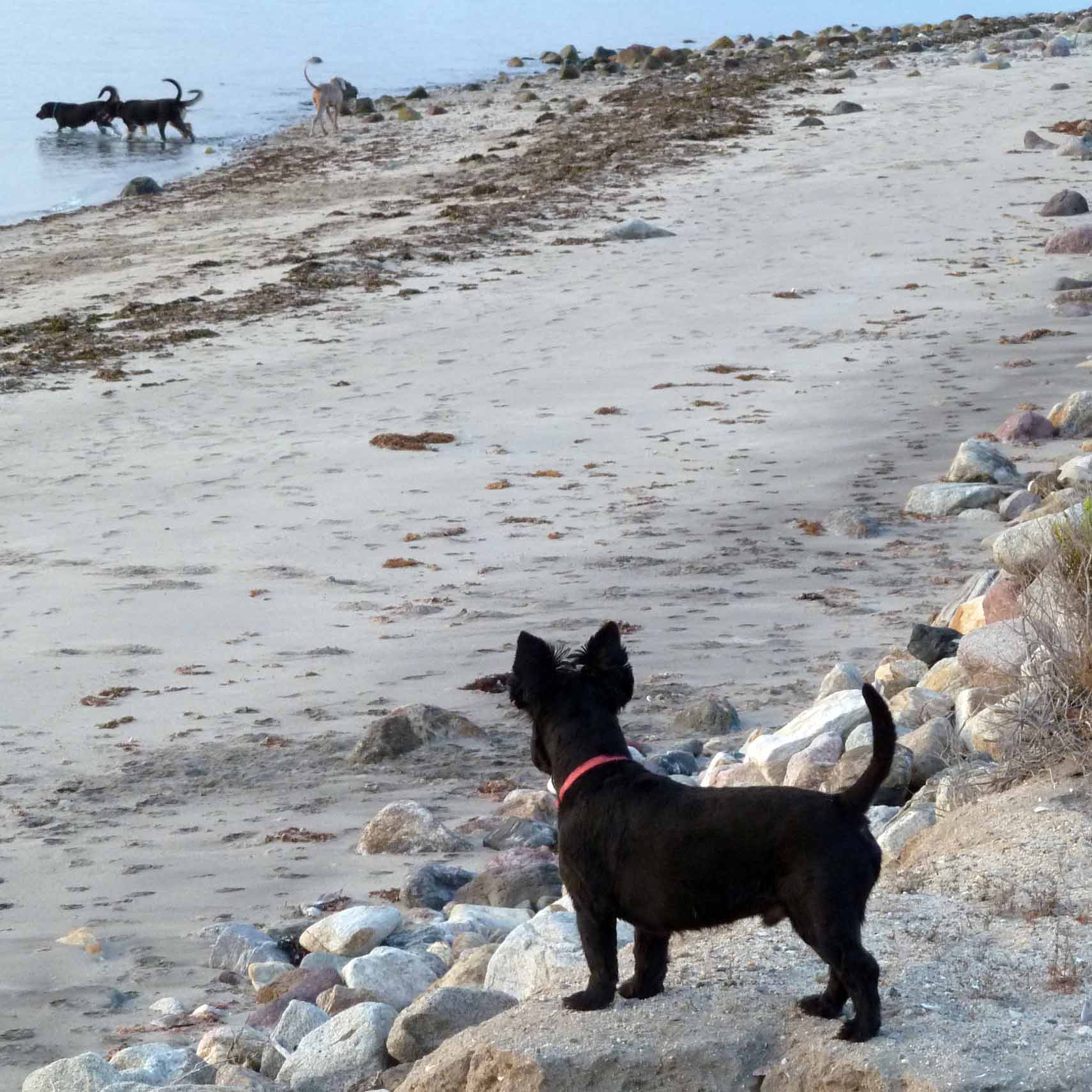When I was first thinking about what it might be like to live in Bahia de Los Angeles and getting to know the neighbors, I asked Stu, who lives six months of the year on the beach in a permanently anchored 5th wheel with his wife Dayna, if there was a veterinarian in town, even though I doubted that a village of 800 residents with only a medical clinic that I had yet to find open, would provide enough demand to support a vet.
“No vet,” said Stu. “But there’s a ‘Dog Lady’ up the beach a couple of miles.
“A dog lady?”
“Yeah, she’s not an actual vet but she works on dogs. She’s got antibiotics a some other stuff.”
“Good to know,” I told him. “Better than nothing.”
It was February when Stu and I had this conversation. It was now August, and I was preparing to head north in a day or two and still had not met the Dog Lady. Introducing myself to the Dog Lady was on my list of priorities for this trip. I’d rather learn where the Dog Lady lived when I didn’t need her rather than wait until I did. This morning I drove over to Ruben’s house, all of 500 yards from my own house, hoping he would have time to show me where the Dog Lady lived. Ruben had tried to explain to me where I could find her earlier in the week, but I was unsuccessful in making sense of his instructions. ‘Chain link fence’ was not a part of Ruben’s English vocabulary and the Spanish translation was not a part of mine.
So when I asked him to take a drive with me to the Dog Lady’s house, he said, “Sure, sure, no problem,” and hopped into my truck.
We drove north, past the Hotel Vientos, past a dozen sun scorched signs along the side of the road. One sign was for someone who evidently made pizza, another announced an art studio. One sign had an official look to it, white letters against a painted green aluminum background, sturdily mounted on poles, that read ‘Rachel Y Larry.’
“Who’s Rachel and Larry?” I asked Ruben.
“Oh, they have a little hotel on the beach,” said Ruben.
“That lime green building just up from yours?”
“Yes, yes, that’s the one.”
I’d walked by the two story building on my beach walks. The roof was patched with blue tarps and composition shingles. Someone told me that the second floor was in such poor repair that they could no longer use it.
“Do they have a restaurant?”
“Yes, but only for people who stay there, I think,” said Ruben. He wasn’t quite sure.
“So are they nice people, Rachel and Larry?”
“Yes, yes, very nice people. But they are dead.”
“Really?” I said, not expecting this response. The sign was so new-looking.
“Yes, Rachel, she died of cancer. And then Larry died. Ruth is the owner now.”
We drove past a small sign about the size of a realtor’s sign. The lettering was faded by the relentless sun and read ‘Artist Studio’ with an arrow pointed down a dirt road that led to the beach.
“Is there really an artist studio down there?”
“Yes, yes, I think so. A woman lived down there and painted pictures. But she’s dead now. She left a lot of paint behind.”
“Seems like a lot of people die in Bahia,” I said, thinking of my friend Antonio Rezendiz who died suddenly while loading cement blocks into his pickup truck a year and a half ago.
“Yes, people they die,” agreed Ruben.
I felt like asking Ruben what happens when people die down here, people like, say, gringo artists living on the beach but before I could he said, “Here, here... turn here.”
We hung a right toward the beach and followed the road past a couple of trailers and large prefab metal building. “What goes on in there?” I asked Ruben.
Ruben shrugged, “No sé.”
The road ended at two, twenty-five foot trailers parked side-by-side. A plywood structure covered the eight-foot space between them and this, along with the plywood wall at the back, formed a small shaded patio. At the rear of the patio was a well-used sofa; book shelves held medical books and novels, most of them by a single author. An oriental rug covered most of the cement slab floor.
“Is she home?” I asked.
“I don’t know, pull up a little bit.”
I eased the truck forward so that the doors of both trailers were visible. The Dog Lady apparently lived in one trailer and used the other for an examination room. A friendly husky mix appeared to out of nowhere greet us, tail suspended over his body like a question mark: Who are you?
I got out of the truck and walked the few feet to the trailer on the right. “Hola? Anybody home?” Nothing.
“Maybe she is on the playa,” said Ruben.
We walked a few feet over to the edge of the bluff so that we could see the beach. There, wading in the water up to her waist was a woman in a thin flower print dress. Three dogs bobbed in the surf beside her. She had a rope in her hand and was wrapping it around a five foot, torpedo shaped mass bobbing in the surf. It seemed to be wrapped in plastic. I could not identify what it was, nor could I imagine what she was doing. At the same time the woman was wrapping the rope around the smaller end of the mass, a man was pulling the starter rope of an outboard engine of a boat at the end of a makeshift dock in front of his nearby trailer. The boat pulled close to the woman and she handed the man the end of the rope. The slack tightened and the mass began to follow the boat.
Ruben called to her. “What’s going on, Susan?”
“Oh, hello Ruben,” said Susan looking up for the first time. “A dolphin washed up on the beach and it was attracting coyotes. The dogs were chewing on it, too... had to get it out of here.”
We watched as the boat headed to the south with the dolphin corpse in tow.
“It’ll wash up farther south, where they can deal with it,” said Susan, washing her hands in the water.
“Down at Daggett’s?” said Ruben, and Susan laughed.
“This is my friend Dale,” said Ruben. “He’s moving here and he has a dog.”
“Oh, okay,” said Susan. “Is your dog sick?”
“No,” I yelled to her. “I just wanted to meet you and see where you lived... just in case he does get sick.”
“Okay,” said Susan. “Sometimes the dogs find a pufferfish, and that can make them pretty sick.”
“Okay, we have to go now, we see you later.” said Ruben, when it was clear that the Dog Lady, in her flimsy dress, was in no hurry to get out of the water.


